An alternative stacked bar graph that shows the value for each category in the sample variable.
Sample code:
library(ggplot2)
df<-reshape2::melt(Music_Rev_Data, id.var = c("Year"))
df$variable=factor(df$variable, levels=c("Live.Music", "Music.Publishing", "Record.Music"))
ggplot(df, aes(Year, value, fill = variable)) +
geom_col(position = position_fill()) +
scale_fill_discrete(name="Type", labels=c("Live music","Music publishing","Record music"))+
scale_y_continuous(labels = scales::percent) +
labs(x="Year", y="%", fill="Type")+
geom_text(aes(label = value), position = position_fill(vjust = .5), size=9)+
theme_minimal()+
theme(axis.text.x = element_text(hjust = 1, face="bold", size=12, color="black"),
axis.title.x = element_text(face="bold", size=16, color="black"),
axis.text.y = element_text(face="bold", size=12, color="black"),
axis.title.y = element_text(face="bold", size=16, color="black"),
strip.text = element_text(size=10, face="bold"),
plot.title = element_text(hjust = 0.5,size=20, face="bold"),
legend.text = element_text( color = "black", size = 16,face="bold"),
legend.position="bottom",
legend.box = "horizontal",
legend.title = element_blank())
Plot:

Sample data:
Music_Rev_Data<-structure(list(Year = c(2014, 2015, 2016, 2017, 2018, 2019, 2020
), Record.Music = c(13.4, 14, 15.2, 16.6, 18.1, 19.6, 21.1),
Music.Publishing = c(11.3, 10.4, 11.2, 11.5, 11.5, 12.1,
11.4), Live.Music = c(24.2, 25.2, 25.8, 26.7, 27.9, 28.6,
7.3)), class = "data.frame", row.names = c(NA, -7L))

